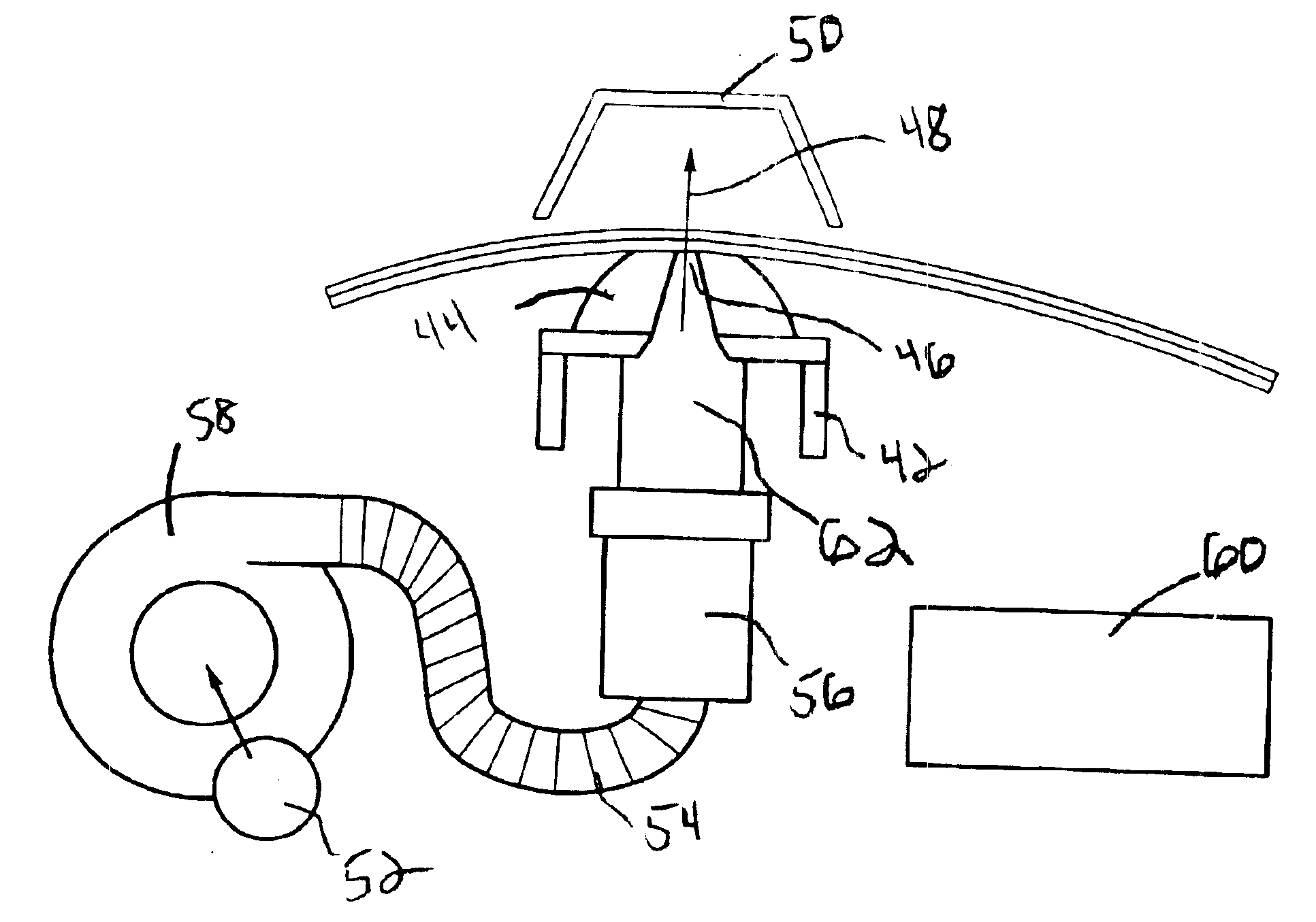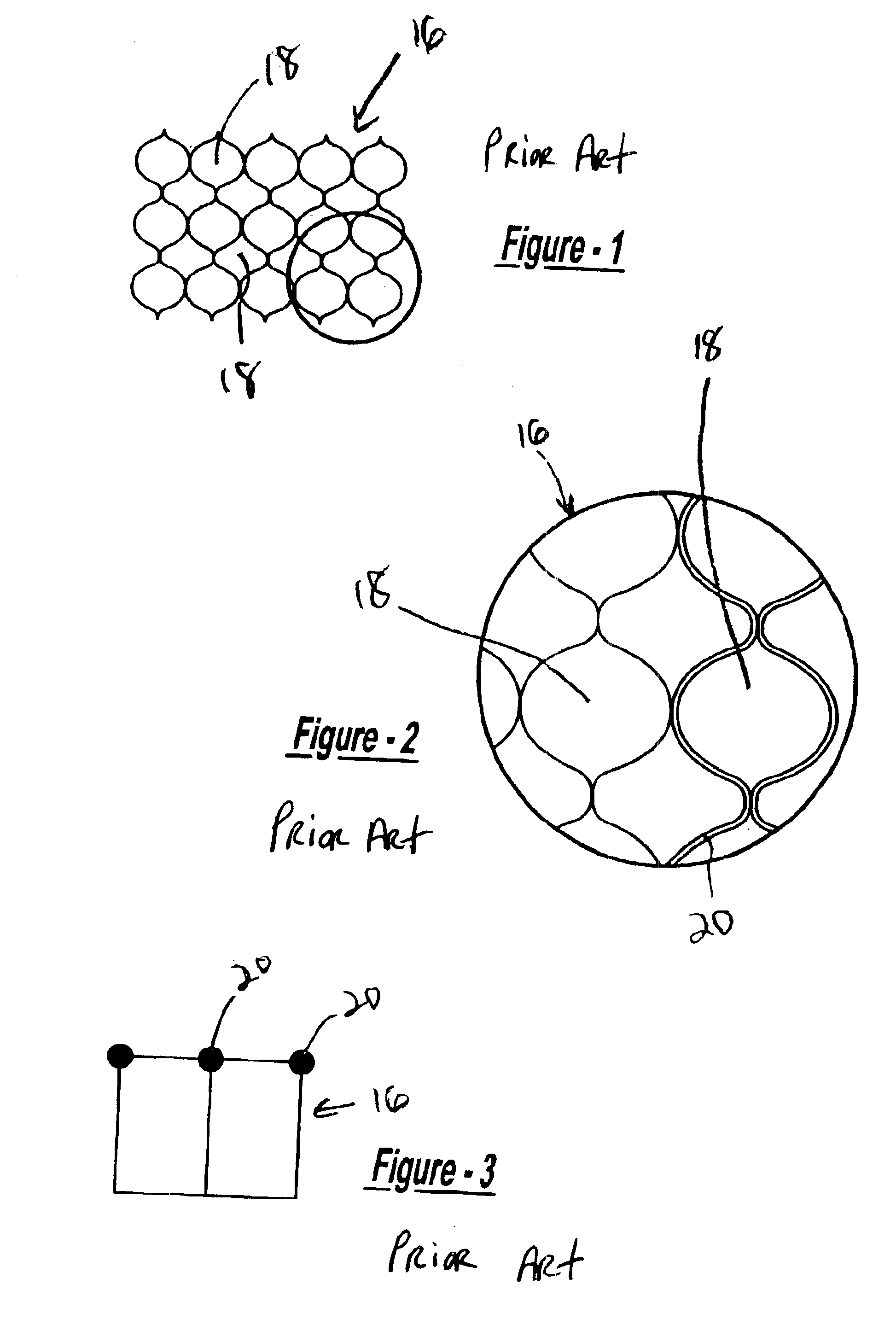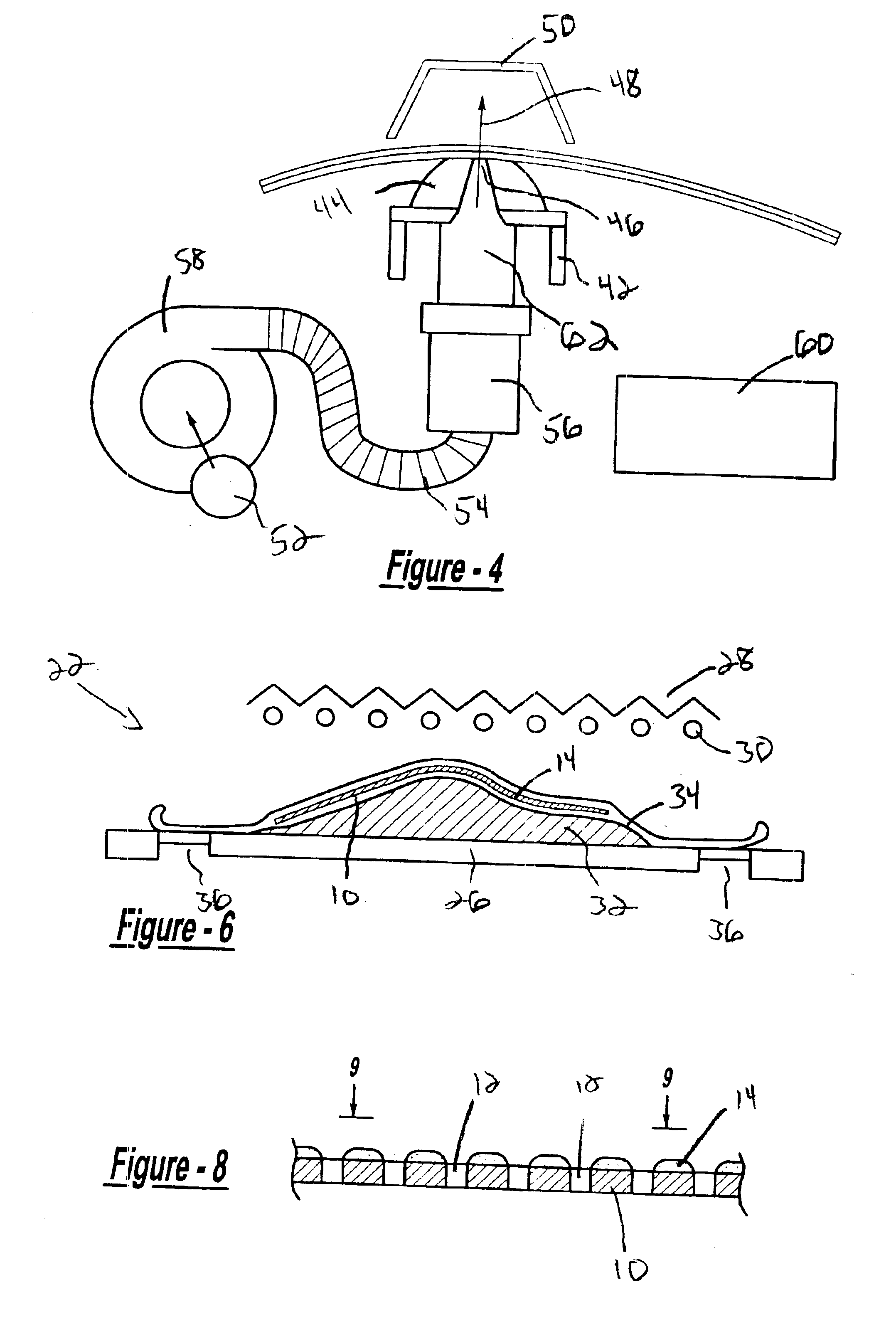Method and apparatus for applying a film adhesive to a perforated panel
a technology of film adhesive and perforation, applied in the field of applying film adhesive to acoustic face sheets, can solve the problems of clogging even more perforations in acoustic panels, sharp reduction of the acoustic absorption ability of the acoustic face sheets, and slipping of adhesives
- Summary
- Abstract
- Description
- Claims
- Application Information
AI Technical Summary
Benefits of technology
Problems solved by technology
Method used
Image
Examples
Embodiment Construction
)
Referring to the drawings, a method and apparatus for panel and film adhesive reticulation according to the present invention is shown. The panel and film adhesive reticulation method and apparatus is generally used to manufacture acoustic aerospace face sheets or panels for uses in aerospace vehicles. The use in such aerospace vehicles could be anything from containment walls for engines to skins for the body and wings of such vehicles. The acoustic face sheet generally is made of graphite or fiberglass, however it should be noted that other materials could also be used such as composite materials, plastics, or metals depending on the design and weight requirements of the aircraft. The key to acoustic face panels is the noise attenuation. The panels have a honeycomb core cell that is used to dampen noise and / or absorb acoustic waves. The panels will help to dampen any noise being heard by passengers and pilots of airplanes or other aerospace vehicles. If the core cells in the acou...
PUM
| Property | Measurement | Unit |
|---|---|---|
| distance | aaaaa | aaaaa |
| pressure | aaaaa | aaaaa |
| time | aaaaa | aaaaa |
Abstract
Description
Claims
Application Information
 Login to View More
Login to View More - R&D
- Intellectual Property
- Life Sciences
- Materials
- Tech Scout
- Unparalleled Data Quality
- Higher Quality Content
- 60% Fewer Hallucinations
Browse by: Latest US Patents, China's latest patents, Technical Efficacy Thesaurus, Application Domain, Technology Topic, Popular Technical Reports.
© 2025 PatSnap. All rights reserved.Legal|Privacy policy|Modern Slavery Act Transparency Statement|Sitemap|About US| Contact US: help@patsnap.com



